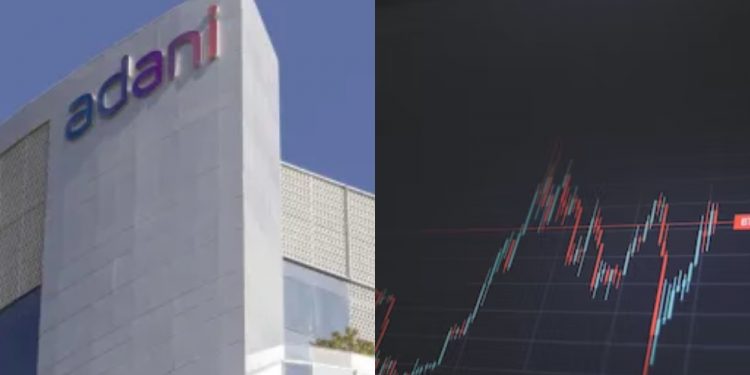New Delhi: Amid a political furore over a meltdown in the Adani group shares, stock market data shows it is not only the plunge now but the sharp surge of the past also drew regulatory attention and enhanced surveillance.
Adani group stocks have taken a huge beating on the bourses, losing billions of dollars in market value, after US-based activist short-seller Hindenburg Research made a litany of allegations, including fraudulent transactions and share price manipulation at the Gautam Adani-led group.
The Adani group has dismissed the charges as lies, saying it complies with all laws and disclosure requirements. The opposition, however, has been calling it a big fraud.
The capital markets watchdog, the Securities and Exchange Board of India (Sebi), has also been facing criticism from some opposition leaders that it has not intervened in the matter.
Sebi has said it is committed to ensuring the stock market’s integrity and all necessary surveillance measures are in place to address any excessive volatility in individual shares.
As per the data available with the stock exchanges, seven Adani group stocks have triggered regulatory surveillance actions during various periods since 2019, on account of both unusual price rise and fall and high promoter pledge. Six listed Adani scrips are under ASM (Additional Surveillance Mechanism) as of February 3, 2023.
Sebi and stock exchanges have put in place additional surveillance measures to address the issue of excessive volatility in specific scrips. Whenever there are sharp movements in the individual stock prices, upper or lower side, the ASM gets triggered automatically.
Niranjan Shastri, Associate Professor at SBM (School of Business Management), NMIMS Indore, said the ASM framework first came into force in 2018 when Sebi and exchanges decided that there was a need to bring surveillance in addition to existing measures in force and the ASM shortlisting can happen even if markets are moving upward because price variation, both downward and upward, is one of the parameters.
Other parameters include client concentration, market capitalisation, volume variation and delivery percentage.
In a statement on Saturday, Sebi said its mandate is to maintain the orderly and efficient functioning of the market and it has put in place a set of well-defined, publicly available surveillance measures (including the ASM framework) to address excessive volatility in specific stocks.
“This mechanism gets automatically triggered under certain conditions of price volatility in any stock,” it said.
Stock exchanges BSE and NSE recently put three Adani group companies — Adani Enterprises, Adani Ports and Special Economic Zone and Ambuja Cements — under their short-term additional surveillance measure (ASM), which is aimed at curbing speculation and short-selling in these stocks.
“Contrary to the perception that recent fall in Adani stock prices triggered ASM, the rise in prices in these scrips had also triggered ASM a few years back,” said a market expert.
The measures under ASM include imposing higher upfront margins (even up to 100 per cent), reduction in price band, settlement on gross basis as against normal net basis, etc.
“These measures give a signal to the investors that such scrips are riskier and investors should consider the same while making their investment decisions,” said a broker.
A broker said the requirement of additional margin is communicated by brokers to investors, and therefore, investors become aware of the ASM in the scrips of Adani Group as there would have been higher margin calls.
Bhavik Thakkar, CEO of Abans Investment Managers Pvt Ltd, said the ASM is one of the many risk management tools which exchanges have to check on extraordinary up or down movement in stocks.
Once a stock is in the ASM, the exchange can tweak margins required to trade the same stock discouraging excessive trade. Stocks in ASM cannot be pledged for availing further cash leverage like loan against securities and even margin funding typically extended by brokers also get restricted, he added.
Out of total 2,113 scrips listed at NSE, ASM measures are currently applicable to 117 scrips, while out of 4,378 scrips listed at BSE, ASM measures are applicable to 288 scrips.
From Adani group, five stocks are exclusively in the cash segment. Of these, Adani Green Energy Ltd faced ASM restrictions for 520 days or 43 per cent of the total 1,208 days since it first came under the additional surveillance mechanism.
Out of these 520 days, the stock was under stringent surveillance for 475 days (91 per cent) on account of price rise and faced up to 100 per cent margin, reduction in price band and trade-for-trade settlement.
Adani Power was under short-term or long-term ASM for 511 days out of total 780 days since it first faced additional surveillance. Of these, it was under stringent action for 267 days for a price rise.
Adani Transmission was under short-term or long-term ASM for 508 days out of 1,618 days since first coming under surveillance for price rise, including 166 days of stringent action.
Adani Total Gas was under short-term or long-term ASM for 493 days out of total 774 days since first getting shortlisted under ASM. Of this, it was under stringent action for 132 days on account of the price rise.
Adani Wilmar got listed February 8 last year and out of total 281 days since first coming under ASM, it was under long-term additional surveillance for 151 days (54 per cent), including under stringent scrutiny due to price rise.
Two scrips of Adani group are in cash as well as in the F&O segment, where long-term ASM is not applicable.
However, short-term ASM and other surveillance measures due to high promoter pledge of shares are applicable to scrips under the F&O segment.
In the cases of Adani Enterprises Ltd and Adani Ports and Special Economic Zone Ltd, surveillance actions for high promoter pledge and under short-term ASM have been taken in the past one year.
PTI







































